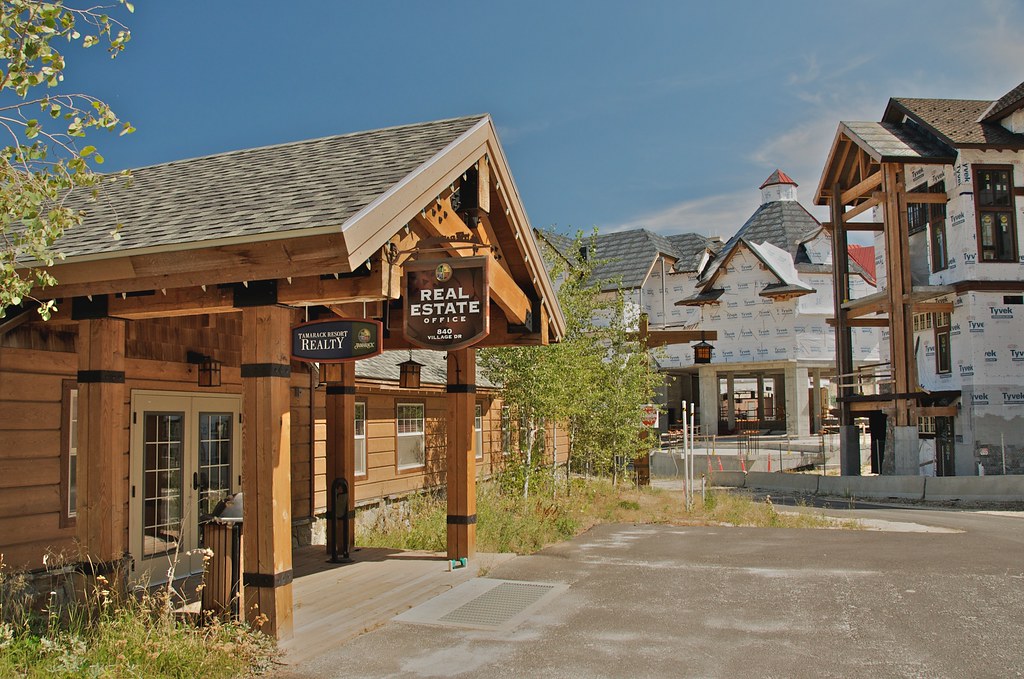
The current housing market in the United States presents a curious paradox that has left many experts scratching their heads and first-time homebuyers grappling with seemingly insurmountable obstacles. Despite a surge in mortgage rates, which historically would dampen demand and cool prices, both have remained stubbornly strong. This defies conventional wisdom and has forced a deeper look into the underlying forces at play. For those who might simplistically assume that an aging population would require fewer homes, or that older generations are out of touch with today’s financial realities, the data tells a remarkably different and more complex story.
Indeed, one prominent voice, Barclays senior economist Jonathan Millar, suggests the answer is quite straightforward: “Blame the boomers.” While this assertion might initially sound counterintuitive, Millar’s Thursday research report meticulously unpacks how the Baby Boomer generation, far from retreating from the housing market, is actively driving demand and keeping prices robust. His analysis cuts through the surface, revealing how a demographic shift, rather than an economic downturn, is shaping the contours of real estate in 2024.
At the heart of Millar’s argument lies the concept of “household formation”—a fundamental engine of the housing market. This occurs when an individual, previously residing with others, establishes their own independent living situation, becoming the head of a new household. Common understanding often links this phenomenon to young adults embarking on their journey after college, evidenced by a noticeable jump in household formation around age 25. However, Millar’s data illustrates a crucial, less intuitive trend: household formation steadily increases and peaks around retirement age and beyond.

This later-life surge in household creation is attributed to several significant life events. As Millar notes, it “reflects the parenthood phase during prime age (25-54), the separation of adult children from the household, divorce, and the heightened possibility of eventually losing a life partner to death.” These factors mean that even as the population ages, the number of distinct households continues to grow. An increasing share of the population shifting into older age groups leads directly to more households being formed, creating sustained pressure on housing demand.
Millar further emphasizes that despite notable increases in housing demand from younger cohorts, specifically the 35-44 age bracket, “almost all of the additional demand is explained by the aging population — with significant increases in households in the 65-74 and 75+ groups.” This demographic reality paints a clear picture: the sheer volume of baby boomers entering and navigating their retirement years is a primary driver behind the persistent strength of the housing market. And this influence is not expected to wane anytime soon; with the youngest boomers currently 59 years old, millions more are poised to retire in the coming years, further contributing to this trend of household creation.
Beyond just forming new households, the Baby Boomer generation is commanding a formidable presence in the housing market through their active participation as both buyers and sellers. Recent data from the National Association of REALTORS® (NAR)’s “2025 Home Buyers and Sellers Generational Trends Report” offers compelling evidence of this dominance. In a significant shift, baby boomers have regained their top spot as the largest share of home buyers, accounting for a remarkable 42% of buyers and 53% of sellers. This is a “plot twist,” as Jessica Lautz, NAR’s deputy chief economist, notes, considering millennials, the largest U.S. population, were previously the dominant force.

The underlying strength of the boomer generation in the housing market is rooted in a powerful advantage: accumulated wealth, particularly home equity. For many decades, these individuals have been in their prime earning years and have owned homes for extended periods. Older adults, for instance, have remained in their current homes for a median of 16 years (among 70- to 78-year-olds) and 13 years (among 60- to 69-year-olds). This longevity in homeownership has allowed them to ride the wave of significant home appreciation witnessed over recent years.
This sustained appreciation has profoundly benefited their net worth. NAR data reveals that in the last five years alone, national home prices have surged by 47% since January 2020, when the median sales price for existing homes was $266,300, compared to $406,700 in July. This substantial increase in value provides older homeowners with substantial equity, which they are leveraging to their advantage in today’s competitive market. The ability to tap into this accumulated wealth allows them to bypass the elevated mortgage rates that have become a significant barrier for many first-time homebuyers.
Indeed, the most striking aspect of the boomers’ financial prowess in the housing market is their propensity for all-cash purchases. Lautz highlights this, stating, “What’s striking is that half of older boomers and two out of five younger boomers are purchasing homes entirely with cash, bypassing financing altogether.” This is a game-changer in a market characterized by intense competition and bidding wars. When interest rates are high and affordability is a significant concern, an all-cash offer stands out, often providing an undeniable edge over offers contingent on financing.
The data underscores this trend. While more than 90% of buyers aged 44 years and younger relied on mortgages to finance their home purchases, a stark contrast emerges with older baby boomers, where only 49% needed a mortgage for their next home. This dynamic, where cash is king, has played a pivotal role in the resurgence of older buyers. Recent NAR data indicates that all-cash home sales have remained at historical highs, accounting for 32% of transactions in February. This financial flexibility means that even if they are not paying entirely with cash, boomers can often put down “such a large down payment that they’re able to compete in a very successful way,” as Lautz explains.

The implications of this financial disparity are stark when comparing boomers to younger generations, particularly millennials. Millennials have faced an uphill battle in the housing market for years, contending with a mountain of student debt, a widespread housing shortage, and formidable competition from their financially stronger elders. The Great Recession disrupted their early careers, leading to slower starts and, for many, a diminished chance of surpassing their parents’ financial standing. Compounding this, homebuilders during the 2010s produced significantly fewer homes—roughly 21,000 single-family homes per 1 million people annually, less than half the rate of the preceding three decades—failing to meet the looming wave of demand from younger buyers.
While millennials, with a population of 72.1 million, eventually overtook baby boomers as the largest living generation by 2019, and despite signs of improving financial footing prior to the pandemic, the landscape drastically shifted. The pandemic ignited a furious housing market, fueled by already undersupplied inventory, historically low mortgage rates, and a newfound flexibility in work locations. This confluence of factors sent home prices skyrocketing, intensifying competition. Consequently, a generation that should have been hitting its prime homebuying years found itself falling further behind.
Jessica Lautz encapsulates this struggle, noting, “There are more millennials than anyone else. So the fact that they are now trailing behind the baby boomer population just speaks to the difficulty of the housing market today.” The inability to secure homeownership, for many millennials, means missing out on crucial years of building equity, which is the most popular form of wealth creation for most American households. This further exacerbates the economic divides, as millennial homebuyers are also more likely to rely on financial assistance from friends or family, tilting the playing field towards those with generational resources.
In contrast, baby boomers came of age during a period of robust housing construction. In the 1960s and 1970s, homebuilders averaged approximately 50,000 housing starts per 1 million people each year, more than double the rate seen in the 2010s. This building boom significantly bolstered homeownership rates among boomers, with more than half owning a home by the age of 30, compared to 48% of Gen Xers and just 42% of millennials. Furthermore, boomers have maintained their homebuying activity longer than previous generations, who were more inclined to settle into one home. The share of recent buyers aged 60 and older increased by 47% from 2009 to 2019, indicating that millennials face unprecedented competition from their parents’ and grandparents’ generations.

When the pandemic intensified the housing market, boomers were exceptionally well-positioned to leverage their economic advantages. The substantial equity they had accrued over decades—the average homeowner gained roughly $210,000 in equity over the past decade, according to NAR—became a powerful tool. As the typical down payment for a home more than doubled during the pandemic, peaking at $66,000 in May 2022, the ability to fund purchases with cash savings or proceeds from a prior home sale gave senior buyers a distinct edge. This is not to say the housing market is a “generation-versus-generation cage match,” as one observer notes, but in an environment of limited supply, the prosperity of one generation often appears to come at the expense of another.
This robust financial position of the boomer generation means they are relatively insulated from the fluctuations of the market that disproportionately impact younger buyers. As mortgage rates climbed from historical lows of less than 3% during the pandemic to about 6.4% by late March, the competition for homes has indeed slowed. This shift could theoretically benefit first-time buyers, who are now reportedly winning out on homes more often. However, these buyers are also far more likely to rely on loans, making them highly susceptible to higher borrowing costs. As Lautz succinctly puts it, “While first-time homebuyers suddenly saw their affordability hurt by the rise in interest rates, people who are paying all cash didn’t. They’re not going to have the same challenges.”
Even as some predict that nationwide home prices might see a slow deceleration, perhaps reaching increases of about 2.5%, they are still expected to remain dramatically higher than pre-pandemic levels. Jonathan Millar projects that demand for housing will likely continue, driven by the persistent demographics of aging boomers. While new housing construction could potentially increase supply and temper price rises, the reality is that overall housing shortages are likely to prevail. Millar concludes that risks to forecasts for both housing prices and rents are “to the upside, especially as the Fed enters its cutting cycle in late 2024,” which could further stimulate buying activity.
This sustained demand is also fueled by a broader societal shift among boomers: a desire to remain in their homes longer, bypassing nursing home facilities. This means their active role in the housing market is likely to continue for years to come. In essence, the narrative that boomers are out of touch with housing costs or unprepared for the market is swiftly countered by evidence of their significant financial leverage and strategic market participation. They are not merely observers but active, powerful players shaping the market’s dynamics, often outcompeting younger generations who lack their substantial accumulated wealth and ability to pay in cash.

Having established the Baby Boomer generation’s undeniable financial leverage and their role as pivotal drivers in the current housing market, it becomes crucial to delve deeper into the specific preferences guiding their housing choices and the broader implications these preferences have on the market’s intricate dynamics. Understanding what boomers seek in a home, and how these desires intersect with market realities, reveals a complex landscape of challenges and opportunities for all involved, from individual homebuyers to seasoned real estate professionals.
Baby Boomers, a generation that has consistently shaped American culture and economy, hold a formidable position in the housing sector. Their homeownership rate stands remarkably high at 74%, significantly surpassing the national average of 63%. This robust homeownership is a testament to their accumulated financial stability, built over decades of career progression and property investment. This deeply ingrained sense of homeownership influences every decision they make within the real estate arena.
Their current housing situation is largely characterized by two prominent tendencies: downsizing or aging in place. Many boomers, as they approach or enter retirement, opt to downsize their homes. This decision is often motivated by a desire to reduce expenses, minimize maintenance needs, and embrace a simpler, less cluttered lifestyle. Simultaneously, there’s a growing appeal for urban living, with many retirees exchanging suburban residences for city apartments or condos, seeking proximity to healthcare, cultural amenities, and accessible public transportation. A 2023 study by the National Association of Realtors (NAR) underscores this shift, noting that over 40% of baby boomer homebuyers favored smaller homes in walkable neighborhoods, illustrating a clear recalibration of priorities.
Conversely, a significant portion of the boomer population chooses to “age in place.” This means making strategic modifications to their existing homes to comfortably accommodate their changing needs as they grow older. These modifications can range from minor adjustments to significant renovations, all aimed at ensuring continued independence and safety within a familiar environment. Both downsizing and aging in place, while seemingly distinct, exert a profound influence on the overall real estate market, creating varied demands for different types of properties.
The implications of these boomer housing choices on the real estate market are multifaceted. The pervasive trend of downsizing generates a robust demand for smaller homes and townhouses, particularly in desirable, amenity-rich areas. This concentrated demand can lead to heightened competition and, consequently, rising prices in specific markets, directly impacting inventory levels. Simultaneously, this trend opens up significant opportunities for real estate developers and investors who can strategically build age-restricted communities or retrofit existing properties to cater precisely to the unique needs of this demographic. Furthermore, as some boomers downsize, they may choose to rent rather than buy, increasing the demand for quality rental properties.
Yet, the boomer impact isn’t solely limited to a quest for smaller footprints. A counter-trend sees some baby boomers choosing to upgrade their homes or acquire larger properties to facilitate multigenerational living arrangements. This increasingly common scenario is driven by a desire to care for aging parents, spend more time with adult children, or provide housing for them due to economic pressures. This, in turn, fuels demand for properties with additional bedrooms, multiple living spaces, and layouts that can comfortably accommodate diverse family dynamics. It is clear, then, that real estate professionals must possess a nuanced understanding of these varied, sometimes seemingly contradictory, boomer preferences to effectively navigate the market.
Looking ahead to 2024, projected trends in Baby Boomers’ housing preferences solidify their unique imprint on the market. One significant shift is the increasing gravitation towards senior-friendly communities and specialized housing options. These communities are meticulously designed to cater to the specific needs and preferences of older adults, often providing a suite of amenities and services that promote an active and healthy lifestyle. Options like retirement communities and assisted living facilities are experiencing a surge in popularity, offering not just housing but a strong sense of community and tailored support for aging individuals, easing transitions and fostering well-being.

Another paramount consideration for boomers is accessibility and universal design features within their homes. They prioritize properties that are easily accessible and promote comfortable, convenient living for the long term. This translates into high demand for features such as wider doorways, grab bars in bathrooms, and step-free entryways. Furthermore, substantial home modifications like the incorporation of ramps and elevators are increasingly being integrated to accommodate individuals with mobility challenges. The overarching focus is on creating a safe, inclusive, and future-proof living environment that upholds independence and significantly reduces the risk of accidents.
The demand for single-story homes and main-floor primary bedrooms is also expected to escalate significantly in the coming years. Baby boomers are gravitating towards single-story layouts to circumvent the physical challenges associated with climbing stairs, ensuring ease of movement throughout their homes. Having essential living spaces, including the primary bedroom, on the main floor offers unparalleled comfort and convenience, eliminating the need for excessive navigation within the house. This preference for one-level living reflects a proactive approach to maintaining comfort and independence as they age.
Finally, the integration of technology for both safety and convenience is becoming a non-negotiable aspect of boomer housing preferences. Baby boomers are increasingly embracing technological advancements to enhance their home environment. Smart-home systems and automation features allow for remote monitoring and control of various aspects of their homes, from lighting to thermostats. Voice-activated assistants and sophisticated security systems provide invaluable peace of mind for aging homeowners and their families. Technology is also being integrated into specialized areas such as health monitoring devices and proactive home maintenance systems, all designed to robustly support the desire to age in place gracefully and securely.

The overarching U.S. housing market in 2024 faces a distinct set of challenges and opportunities, largely shaped by these evolving boomer housing demands. A primary challenge remains the pervasive inventory shortages. As baby boomers, a vast demographic, actively seek out suitable housing options that align with their specific preferences, they naturally generate increased demand for a limited supply of homes. This competitive pressure, as we’ve seen, often results in intensified bidding wars and higher housing prices, posing a significant hurdle for prospective buyers across generations.
Compounding this is the ongoing concern of rising housing prices and affordability. While baby boomers may possess substantial accumulated wealth, even they can find it challenging to afford ideal housing options, particularly those with specialized features or in highly sought-after locations. For younger generations, however, the affordability crisis is even more acute, given their comparatively limited financial resources and the uphill battle they’ve faced in building equity. Many younger individuals describe cutting their spending, delaying vacations, and even taking on side hustles just to afford the current record-high home prices. The market, therefore, faces the delicate task of balancing the robust demands of boomers with the critical need to ensure accessibility and affordability for all.
Yet, within these challenges lie significant opportunities for shrewd real estate investors and developers who are prepared to target the specific needs of the baby boomer demographic. Investing in housing options that are meticulously designed to meet the desires for senior-friendly communities, universal design, and technological integration can prove highly profitable. Baby boomers, generally financially stable, are often willing to invest significantly in housing that promises their desired lifestyle, amenities, and long-term comfort. Developers who demonstrate a keen understanding of these nuances can tap into a highly lucrative market by offering tailored solutions such as active adult communities or downsizing-friendly properties. Additionally, the increased demand for rental properties from downsizing boomers presents another promising avenue for investors.

The implications for real estate professionals and other market players are profound, necessitating a strategic pivot to effectively serve this powerful demographic. A fundamental step is to develop a deep understanding of the unique needs and preferences of baby boomers, whether they are potential homebuyers or sellers. This involves researching their priorities concerning location, accessibility, and proximity to essential amenities like healthcare and recreational facilities. Professionals must be well-versed in the types of housing options that particularly appeal to boomers, such as single-level homes, properties with low-maintenance yards, or those within active adult communities. Recognizing the potential need for specific accessibility features—from grab bars to wider doorways—and staying abreast of technological advancements that enhance the living experience for this generation are also crucial.
Tailoring marketing and advertising strategies to specifically attract baby boomer clientele is equally vital. Real estate professionals should identify and utilize the preferred communication channels of this demographic, which might include email, but also traditional mail and targeted advertisements in print media, given many boomers still favor offline sources for information. Developing a strong online presence, complete with a user-friendly website and actively managed social media accounts, is also essential. Marketing efforts should highlight features that resonate with boomers, such as low-maintenance living, proximity to healthcare, or vibrant community activities, emphasizing the lifestyle benefits a particular property can offer, including nearby recreational or cultural events.
Finally, collaborating with other professionals to provide comprehensive services for baby boomers will differentiate and elevate real estate services. Partnering with financial planners or mortgage brokers can help boomers navigate financing options specifically suited to their stage of life, such as reverse mortgages or leveraging existing equity. Connecting with home staging professionals or interior designers can make properties more appealing to this demographic, while collaborating with contractors or remodeling experts can provide valuable guidance on home modifications that improve accessibility. Establishing relationships with senior living specialists or retirement community representatives allows for offering alternative housing options, and engaging with legal and estate planning professionals can provide essential guidance on the intricate aspects of downsizing or selling property. By embracing these collaborative approaches, real estate professionals can not only meet but exceed the diverse demands of baby boomer homebuyers and sellers, ensuring their continued success in an evolving market.
In essence, the narrative that boomers are detached from the contemporary housing market or unaware of its costs is clearly refuted by the depth of their market engagement and their strategic financial maneuvers. Far from being passive observers, they are active, highly influential players, leveraging decades of wealth accumulation and distinct preferences to shape the market’s trajectory. Their decisions ripple across the entire industry, impacting inventory, pricing, and the very design of future housing. As they continue to define their living situations in retirement and beyond, their presence will ensure that the housing market remains a dynamic, competitive, and constantly evolving arena.




